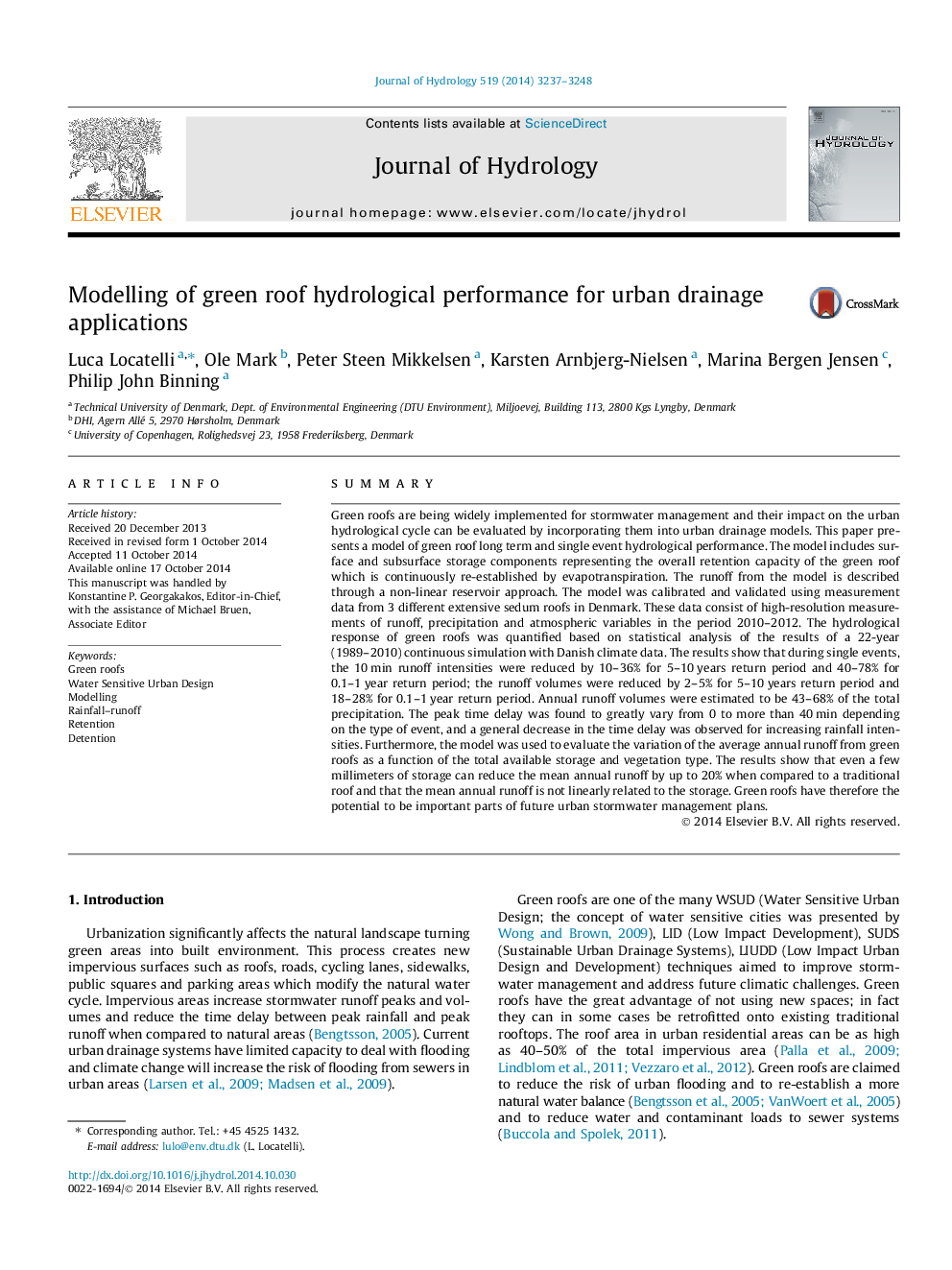| Article ID | Journal | Published Year | Pages | File Type |
|---|---|---|---|---|
| 6412220 | Journal of Hydrology | 2014 | 12 Pages |
â¢A simple rainfall-runoff model for green roofs for use in distributed and dynamic urban hydrological model.â¢Peak runoff increases with increasing the return period of the event.â¢Runoff volume increases with increasing the return period of the event.â¢Annual runoff from green roofs is significantly lower than the one from traditional roofs.â¢Green roof characteristics do influence the annual runoff.
SummaryGreen roofs are being widely implemented for stormwater management and their impact on the urban hydrological cycle can be evaluated by incorporating them into urban drainage models. This paper presents a model of green roof long term and single event hydrological performance. The model includes surface and subsurface storage components representing the overall retention capacity of the green roof which is continuously re-established by evapotranspiration. The runoff from the model is described through a non-linear reservoir approach. The model was calibrated and validated using measurement data from 3 different extensive sedum roofs in Denmark. These data consist of high-resolution measurements of runoff, precipitation and atmospheric variables in the period 2010-2012. The hydrological response of green roofs was quantified based on statistical analysis of the results of a 22-year (1989-2010) continuous simulation with Danish climate data. The results show that during single events, the 10Â min runoff intensities were reduced by 10-36% for 5-10Â years return period and 40-78% for 0.1-1Â year return period; the runoff volumes were reduced by 2-5% for 5-10Â years return period and 18-28% for 0.1-1Â year return period. Annual runoff volumes were estimated to be 43-68% of the total precipitation. The peak time delay was found to greatly vary from 0 to more than 40Â min depending on the type of event, and a general decrease in the time delay was observed for increasing rainfall intensities. Furthermore, the model was used to evaluate the variation of the average annual runoff from green roofs as a function of the total available storage and vegetation type. The results show that even a few millimeters of storage can reduce the mean annual runoff by up to 20% when compared to a traditional roof and that the mean annual runoff is not linearly related to the storage. Green roofs have therefore the potential to be important parts of future urban stormwater management plans.
